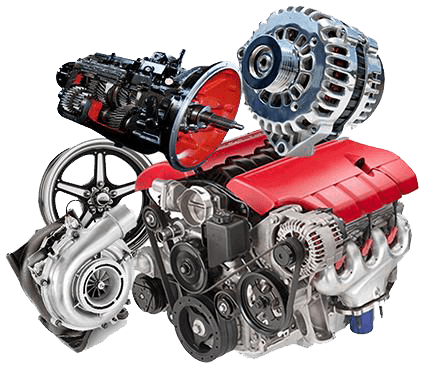Opel Corsa Engine: Top Tips for Upkeep and Care
Opel Corsa Engine: Top Tips for Upkeep and Care
Blog Article
Extensive Examination of the Mechanical Parts of a Hatchback's Motor
Understanding the intricate operations of a hatchback's motor is akin to deciphering a complex puzzle where every piece plays an essential role in the overall efficiency of the car. As we dive into the internal functions of these mechanical marvels, a much deeper appreciation for the harmony of components that drive a hatchback forward arises.
Pistons and Cylinders

The effectiveness and performance of a hatchback's engine depend greatly on the smooth operation of the cylinders and pistons. Proper sealing between the piston rings and cylinder walls is essential to maintain compression and prevent loss of power. Furthermore, the dimension and layout of the cylinders directly influence the engine's variation and general power outcome. Regular upkeep and monitoring of these parts are important to guarantee optimum engine efficiency and long life.
Crankshafts and camshafts
Camshafts and crankshafts play important functions in the operation of a hatchback's inner burning engine, facilitating specific timing and conversion of straight movement right into rotational power. The camshaft, located within the engine block, regulates the opening and closing of the engine valves at specific intervals. opel corsa engine.
Any misalignment or breakdown in these components can lead to engine performance problems and possible damage. Normal maintenance and prompt replacements are required to make certain the smooth operation of these essential engine elements in a hatchback.
Valves and Timing Belts
Playing a vital function in the synchronization and procedure of a hatchback's interior burning engine, the shutoffs and timing belts function in conjunction with the crankshafts and camshafts to make certain ideal performance. Appropriate timing is important for the engine to function efficiently and avoid damage due to interference between moving parts.

Gas Injectors and Spark Plugs
Gas injectors and spark plugs are important parts in a hatchback's engine system, responsible for the efficient distribution of gas and ignition of the air-fuel blend. Modern hatchbacks usually utilize electronic gas injection systems that can readjust gas shipment based on various elements such as engine tons, rate, and temperature level.
Properly operating trigger plugs are essential for engine efficiency, fuel effectiveness, and discharges regulate. Regular assessment and maintenance of both gas injectors and spark plugs are vital to make sure the engine runs smoothly and successfully.
Cooling System and Lubrication
Provided the critical function of keeping optimum engine performance and efficiency in a hatchback, the air conditioning system and lubrication mechanisms are indispensable components that make sure correct working and longevity of the car. The air conditioning system in a hatchback is liable for managing the engine temperature level to avoid overheating. It commonly includes a radiator, water pump, thermostat, and cooling follower, collaborating to dissipate warm generated during engine procedure. Appropriate lubrication is just as crucial as it reduces friction in between relocating components, preventing damage. The lubrication system in a hatchback consists of the oil pump, oil filter, and various lubricants that minimize rubbing within the engine. Regular maintenance of the air conditioning system involves examining coolant levels, checking for leakages, and making certain proper performance of cooling parts. Likewise, regular oil changes and utilizing the suggested lubricating substances are essential for the lubrication system's efficiency. With each other, the cooling system and lubrication see this devices play an essential duty in maintaining the hatchback's engine running smoothly and efficiently.
Final Thought

Pistons and cyndrical tubes are important Check This Out parts within the interior combustion engine of a hatchback, liable for converting gas into mechanical energy. The camshaft, located within the engine block, manages the opening and closing of the engine valves at specific periods.Playing a vital role in the synchronization and operation of a hatchback's interior combustion engine, the shutoffs and timing belts work in combination with the crankshafts and camshafts to make sure optimal performance.Gas injectors and trigger plugs are critical elements in a hatchback's engine system, accountable for the reliable shipment of gas and ignition of the air-fuel combination. Modern hatchbacks typically use digital gas shot systems that can change gas delivery based on numerous elements such as engine temperature level, load, and speed.
Report this page